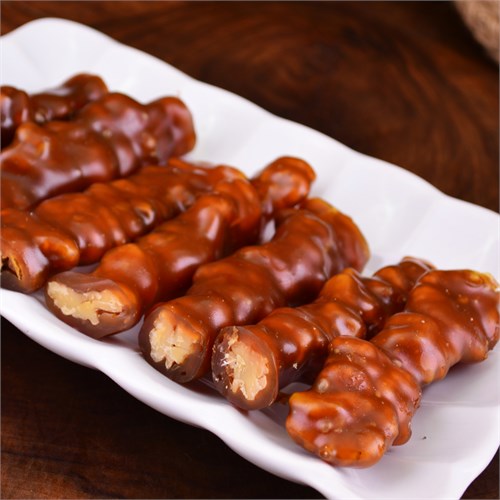While Galle Face Green makes a great starting point, Sri Lanka seems to run on its stomach and short eats are never more than a tummy rumble away. On-the-go snacks are part of the national diet and cheap enough that everyone can fill up, you will be parting with pennies rather than pounds. After conducting a thorough sampling, I have come up with a list of what not to miss.
Hoppers
Sri Lankans love their hoppers, a pancake bowl served with either eggs in the morning or curries in the evening. Add your own sambols and chutneys and you are away, having spent under 50 rupees. The ratio of how crispy the pancake to how soft and gooey the filling is a debate as old as time. Green Cabin is a traditional spot, Café on the Fifth a slicker, more modern addition.Kiribath (Milk rice)
Rice is cooked with rich coconut milk and a hint of salt until it turns soggy and porridge-like. Kiribath (milk rice) is commonly served with lunu miris, an onion relish mixed with red chili, salt, and lime. In Sri Lankan culture, milk rice symbolizes prosperity, hence, new beginnings such as the first day at work, birthdays, and festivals are often marked with a few diamond-shaped slices of milk rice.Isso Vadai
Vadai are tiny fritters, made with dhal. Deep-fried and crunchy, they are the island’s favorite snack. Isso (which means “prawns” in Sinhala) vadai add in a few prawns, as the name suggests.Kothu
The King of Sri Lankan street food, Kothu in theory seems like an easy enough dish to make but people rarely make it at home. Instead Kothu can be bought at anyone of the multitude of restaurants that has to offer. The dish consists of Godambha rotti, vegetables, egg or meat and some spices. It is prepared on a hot cooking surface with two rectangular knives chopping the roti and accompaniments up into small pieces before it is served piping hot. Kothu is usually accompanied with sauce to put over it like Masala sauce.Manioc Chips
Made from the humble cassava, Manioc chips have been around in Sri Lanka sometimes. The preparation is simple but the taste is so good, we would still make it even if it were the hardest thing in the world to make. All you have to do is cut the chips into thin slices then deep dry until golden brown add some salt and chili and you have yourself a satisfying snack that will keep you munching for hours.Tropical Fruit
Like most Southeast Asian countries, Sri Lanka grows a plethora of tropical fruits of every size and shape. The most popular fruits range from the typical coconuts, to mangoes, pineapples, guavas and bananas to the more unusual wood apple fruit, durian, longan, jackfruit and the delicious rambutan, which tastes like a sweet lychee fruit.
Pani Pol

Pani Pol refers to sweet coconut pancakes, one of the most marvelous desserts to try in the diverse country of Sri Lanka. The tasty bites are made from a palm treacle base and stuffed with fresh coconut and sugar. The syrupy sweetness of the Pani Pol bears similarities with Indian sweets and is one of the most popular meals in the country. From restaurants to vendors who drive around with a kind of bakery on wheels, there are numerous places in which to indulge in the exotic flavors of this meal. Some of the best Pani Pols can be found in the Dehiwala and Wellawatta area around Galle Road. The bustling district is home to a variety of restaurants and street food stalls which fry up some of the delectable treats and serve them at low prices.
Read more: The awesome things to do in Ella Town, Sri Lanka
Source Internet
























